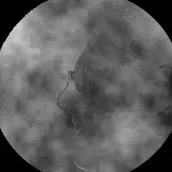-
Posts
152 -
Joined
Reputation Activity
-
 alecspra reacted to smadell in What happens when you open a DXO Pure Raw dng file in Affinity Photo Develop Persona?
alecspra reacted to smadell in What happens when you open a DXO Pure Raw dng file in Affinity Photo Develop Persona?
I agree with your conclusions, @alecspra. As to the increased brightness in the PureRaw-processed version, I suspect this is a result of PureRaw trying to correct lens vignetting in the raw file. As to whether Serif can comment on the question, I’d certainly be in favor of hearing something official. However, they certainly have a lot of fish to fry and if a statement like this takes a back seat to quashing bugs and so forth, it wouldn’t bother me too much.
-
 alecspra reacted to smadell in What happens when you open a DXO Pure Raw dng file in Affinity Photo Develop Persona?
alecspra reacted to smadell in What happens when you open a DXO Pure Raw dng file in Affinity Photo Develop Persona?
@alecspra - after my initial post, I decided to test whether the advice I was giving you was correct. I took a photo in my back room. I purposely chose a dark room, used a wide lens (14mm), and set my aperture to f16 (which gave an ISO of 12,800 and lots of noise). I took the raw file that resulted into Affinity Photo, both before and after processing with PureRaw. I set my Develop Persona assistant to avoid any additional lens correction, noise reduction, or added tone curve. My result? The DxO PureRaw processing is most definitely preserved.
Here are the Develop Assistant settings I used:
Here are both photos, one processed with PureRaw and the other not.
And here is a 200% magnification of the upper right corner, in which the noise and lens distortion is clearly seen in the non-PureRaw photo, but is obviously absent in the photo processed in PureRaw beforehand.
-
 alecspra reacted to Old Bruce in What happens when you open a DXO Pure Raw dng file in Affinity Photo Develop Persona?
alecspra reacted to Old Bruce in What happens when you open a DXO Pure Raw dng file in Affinity Photo Develop Persona?
You can convert to 32 bits. Document > Convert Format/ICC Profile...
A personal opinion aside: I have to say that the over 12 billion distinct colours available in 16 bits should be plenty. 32 bits is necessary if you are using files for scientific research; Astronomy, Medical imaging, etc. but it is overkill for fine art or commercial photography.
-
 alecspra reacted to NotMyFault in What happens when you open a DXO Pure Raw dng file in Affinity Photo Develop Persona?
alecspra reacted to NotMyFault in What happens when you open a DXO Pure Raw dng file in Affinity Photo Develop Persona?
Don’t forget the main reason: having unbound values beyond [0-1] range
unfortunately Affinity lost touch with outer world (meaning: image file format evolution of real world last 8 years) who moved to log/PQ transfer curve and unbound values even with 8..16 bit color depth
-
 alecspra reacted to smadell in What happens when you open a DXO Pure Raw dng file in Affinity Photo Develop Persona?
alecspra reacted to smadell in What happens when you open a DXO Pure Raw dng file in Affinity Photo Develop Persona?
To get back to the original question posed by @alecspra, my understanding of what DxO PureRaw does is to create a new raw file (a linear DNG) and it does not simply add an .xmp file or other “directions” to the original raw file. The DNG file that PureRaw kicks out incorporates sharpening, noise reduction, lens correction, and demosaicing. It does not incorporate any changes to exposure, white balance, etc. As such, this new DNG file acts as any raw file does, except that the demosaicing has already been done. As such, if you process in PureRaw and then do additional raw processing in Affinity Photo’s Develop Persona, you should probably ask AP to avoid any step that would add additional noise reduction, sharpening, or lens correction. My best guess is that simply asking the Develop Persona to not apply a default tone curve will accomplish this. You can then do color and exposure correction to your heart’s content inside of AP before exiting into the Photo Persona.
As a disclaimer, I use Capture One as my raw developer and so have much less experience with AP’s Develop Persona. I do use PureRaw, however, and have never had any (known) issues with using Capture One with a linear DNG file created by PureRaw.
For additional reference, there is a nice article about Linear DNG’s on the DxO site. https://www.dxo.com/news/linear-dng/
-
 alecspra reacted to NotMyFault in What happens when you open a DXO Pure Raw dng file in Affinity Photo Develop Persona?
alecspra reacted to NotMyFault in What happens when you open a DXO Pure Raw dng file in Affinity Photo Develop Persona?
affinity Photo was never able to read „recipes“ from Camera or other apps stored in RAW files or as XMP sidecar.
It will recognize only RAW data and a small set of basic adjustments like WP, exposure, and tries to detect lens model based on metadata (which often fails).
it ignores all other „adjustments“ like sharpening, noise reduction, color shift, contrast settings or usage of „picture profiles“ (Canon speak) or Fuji styles / LUTs.
-
 alecspra reacted to NotMyFault in What happens when you open a DXO Pure Raw dng file in Affinity Photo Develop Persona?
alecspra reacted to NotMyFault in What happens when you open a DXO Pure Raw dng file in Affinity Photo Develop Persona?
When using affinity apps, you must decide between:
doing basic RAW edits in other apps: export to tiff, .. to continue editing in Photo based on exported pixel data with applied/baked-in edits from other app do all edits in Affinity, use DNG or supported Camera native RAW formats (and lens corrects based on lensfun DB with long delay or manual updates) It is not possible to start editing RAW in other apps, and import those edits as starting point for Affinity, while using the original RAW or DNG.
-
 alecspra got a reaction from NotMyFault in Copying Adjustments to other photos
alecspra got a reaction from NotMyFault in Copying Adjustments to other photos
@walt.farrell Thank you for providing this information. Much appreciated!
-
 alecspra reacted to walt.farrell in Copying Adjustments to other photos
alecspra reacted to walt.farrell in Copying Adjustments to other photos
First, a forum hint: to "tag" another user, which will notify them if they have their notification options set to do that:
Type the @ sign Start typing their username. Select the username from the popup list that the forum will provide. You will then get a blue-highlighted field, like @alecspra rather than simple text like @alecspra. As @NotMyFault said, if you're on iPad (which this topic is about) you can't do that.
-
 alecspra reacted to NotMyFault in Copying Adjustments to other photos
alecspra reacted to NotMyFault in Copying Adjustments to other photos
You can’t directly.
you can do this only on Desktop, not on iPad which lacks both options to create presets or record Macros.
Save adjustments as presets in Develop Persona, and choose those presets to apply them to other images. Presets are per panel, not global. try to record macros, and run macros to other images. Affinity does not offer to save „recipes“ internally or as sidecar files.
https://affinity.help/photo2/en-US.lproj/pages/Raw/raw_panelBasic.html
-
 alecspra reacted to walt.farrell in Copying Adjustments to other photos
alecspra reacted to walt.farrell in Copying Adjustments to other photos
Welcome to the Serif Affinity forums, @Jayhaitch.
The term "adjustments" is ambiguous.
Are you talking about adjustments you made to RAW files, while working in the Develop Persona?
Or about Adjustment layers you've added in the Photo Persona, and still have available in an open document or in a saved .afphoto file?
Or about Adjustments you've made in the Photo Persona but already merged into a raster-format image (JPG, TIFF, PNG) or already merged into a .afphoto file or open document?
Each situation will require a different approach.
-
 alecspra reacted to Ldina in How to output a 32 bit image from Develop Persona to Tone Mapping Persona?
alecspra reacted to Ldina in How to output a 32 bit image from Develop Persona to Tone Mapping Persona?
Thanks...Glad it was helpful.
I've never done a YT video, so probably not. I'm a "written" type of guy, so most of my tutorials are in that format. It gives me time to consider what I'm writing and to edit it and provide examples for clarity (hopefully).
James Ritson has a lot of Tutorials on HDR, Tone Mapping, etc, both Version 1 and Version 2 that are worth watching. Others on YT also have videos on the subject.
I think HDR will become pretty widespread in the near future (within the next year or two). Web browsers, new HDR/SDR file formats, workflows, applications and hardware all need to catch up, but that's happening gradually. Some file formats will rise and survive, and others will fail, but we need some common standards to help it along. All new MacBook Pros have HDR Retina Displays capable of displaying up to about 4 f-stops of HDR headroom, and so do many smartphones, tablets, etc. HDR Monitors and HDR TVs are also becoming more commonplace. It's still evolving. So, it's coming soon and I want to be somewhat informed before it is fully fledged.
-
 alecspra got a reaction from Ldina in How to output a 32 bit image from Develop Persona to Tone Mapping Persona?
alecspra got a reaction from Ldina in How to output a 32 bit image from Develop Persona to Tone Mapping Persona?
@Ldina Wow! That is Masterclass. Thank you so much for taking the time to write such a well considered, clear, and concise explanation. You have made rethink some of my editing habits and assumptions. By the way, given how complex this subject is and how many AP users might be interested in reading this text, I wonder if you would consider turning it into a more widely accessible format (youtube video?). 👏 🙏
-
 alecspra reacted to Ldina in How to output a 32 bit image from Develop Persona to Tone Mapping Persona?
alecspra reacted to Ldina in How to output a 32 bit image from Develop Persona to Tone Mapping Persona?
@alecspra I'm not sure what your goal is, so I'm going to ramble on here. You may know some or all of this already, so I apologize if I'm rehashing things you already know. Also, I don't do a lot of 32 bit or HDR work, so hopefully I won't make any mis-statements.
Usually, people work in 32 bit because they want or need HDR output for display on HDR monitors, for use in 3D rendering software, like Blender, or as part of a team based workflow where 32 bit HDR files are required. You need an HDR capable monitor, otherwise you won't be able to see those HDR values. I don't do much HDR (yet) because most people can't display HDR images on their systems, and the file formats and browsers that support both SDR and HDR simultaneously are not widely supported.
32 bit can be used for merging multiple images using Affinity's HDR Merge, or even for developing individual RAW images that have values that exceed SDR (Standard Dynamic Range). In the Develop Persona, you have to set up the Assistant to 32 bit - Take No Action BEFORE you open your RAW file for processing. You also have to have an HDR monitor set to HDR mode (Apple calls that EDR, or XDR, for extended dynamic range). My MacBook Pro Display needs to be set to Apple XDR Display, which is the EDR mode and provides 4 extra f-stops of dynamic range above the normal SDR range. Most other display modes are limited to 0-1 SDR.
Open your RAW (RAW DNG works fine) file in the Develop Persona. If your final product will be HDR content, you can push your Exposure MUCH brighter without clipping tones. The 32 bit panel needs to have EDR/HDR enabled to see these extended values. If you enable Show EDR Clipping you will be able to see any values that exceed the HDR capabilities of your current monitor. Make whatever changes you want in the Develop Persona. So, which develop setting do you choose?
For single RAW images, I almost always choose RAW Layer (Linked), regardless of what my final product will be. This will will create a "LINK" to the original RAW file and keep my file size small in AfPhoto. This will show up in Photo as an "Image Layer". As of v2.5.7, Image Layers can NOT be edited in the Tone Mapping Persona, but supposedly, this will change when v2.6 is released. But, that isn't a problem for me. I keep that "Image Layer" in its pristine state, and simple use the Merge Visible command (Layer > Merge Visible), or use the shortcut, Shift-Option-Command-E, which will duplicate the RAW Image Layer and put it on a new layer as a PIXEL Layer. Pixel Layers are rasterized and CAN be sent to the Tone Mapping Persona in v2.5.7. I like this approach for two reasons. First, my RAW/DNG Image layer is preserved, which allows me to go back and forth to the Develop Persona if needed. Two, since it is LINKED, it doesn't take all that much space anyway, so why not?
The Tone Mapping Persona is most often used for REMAPPING extended dynamic range content and cramming it into SDR range, so it can be displayed on a standard, non-HDR monitor. I sometimes develop single RAW images in 32 bit if they have an extended brightness range that needs to be "redistributed" and reshaped to fit into SDR. I don't normally see a lot of reason to go the the Tone Mapping Persona if my final output will be an HDR file, but Tone Mapping does offer some additional capabilities. If you DO want to enter the Tone Mapping Persona, select your PIXEL LAYER and click the Tone Mapping icon. If your final product will be HDR, UNCHECK the Clamp to SDR box in the Tone Mapping Persona so you are able to see all your HDR values on your HDR monitor. I you want to cram all those HDR values into SDR, you will want to CHECK Clamp to HDR. The Tone Mapping Persona will help you redistribute tones so they all fit into SDR. Make your edits and click Apply.
What arrives in Photo will be a 32 bit Linear file with any HDR values preserved. Make sure 32 bit is enabled in the 32 bit preview panel so you can see all those HDR values, otherwise your image will look terrible (assuming your final image is HDR and you have preserved those HDR values in your file). Make whatever edits you want in Photo to improve your file.
Now it's time to export. If your final output will be an HDR file, you need to stay in 32 bit and export to a file format that preserves HDR values. In Affinity, you have a few choices...PNG 32 bit, EXR, HDR, and JPEG-XL. That's a whole different, and long, discussion. If you export to those formats, with proper settings, you will be saving an HDR file with all those extended brightness values. Unfortunately most people won't be able to open or view your fine work for many reasons (no HDR monitor, proper software, browsers don't support the file format, etc).
If your final output will be SDR, choose one of the non-HDR file formats (including PNG 8/16 bit). This will convert your 32 bit Linear HDR file to SDR "on the fly" as it is being exported. That will cram all your carefully created HDR values into SDR and will look rather lackluster compared to your original HDR image. These file formats are all 8 or 16 bit, mostly 2.2 gamma encoded (instead of Linear gamma), and limited to SDR brightness ranges. If you want to save BOTH HDR and SDR images, save to two different file formats (one for HDR, and one for SDR).
If my final output is intended for SDR viewing (almost always), I normally don't bother developing or editing in 32 bit. Sometimes I will with images that greatly exceed SDR, but I will REMAP those HDR tones to SDR in the Tone Mapping Persona, clamp the values to SDR range, then convert my file to 8 or 16 bit in Photo before saving. 32 bit files are enormous and I see no reason to save those monsters unless I really need them.
The HDR Merge feature in Affinity will combine several bracketed exposures, align them, and blend them into a single HDR image. The HDR Merge process in Affinity ALWAYS DELIVERS A PIXEL-BASED IMAGE. (i.e., NOT an 'Image Layer', but a rasterized pixel layer). So, that's ready to send to the Tone Mapping Persona if you wish to go there.
When I do HDR Merging of multiple, bracketed exposures, I usually preprocess my RAW files. I got mediocre results using RAW source files with Affinity's HDR Merge. Preprocessing them allows me to make sure ALL files have the same White Balance, and I can tweak each file individually to optimize highlights, midtones, shadows, etc. I will save these as high quality JPEG or TIFF files, and use those preprocessed files as the source files in my HDR Merge. I get much better results that way, but it's more work too.
Sorry for the Epic Novel, but I only scratched the surface. 32 bit linear files, HDR, etc, are fairly recent developments and can be confusing. I rarely work in 32 bit unless I REALLY need it, which is not often...at least not yet. At some point, it will become more mainstream, better supported, more common, etc. But by then, the workflows should be faster, smoother, better and easier to implement. I hope this helps and makes sense.
-
 alecspra reacted to walt.farrell in How to output a 32 bit image from Develop Persona to Tone Mapping Persona?
alecspra reacted to walt.farrell in How to output a 32 bit image from Develop Persona to Tone Mapping Persona?
Just a comment: The 2.6 release (now in Beta testing, and expected to be released soon as a retail version) has made some improvements in this area, and Tone Mapping will be allowed and can automatically rasterize the layer. For more details:
-
 alecspra reacted to carl123 in How to output a 32 bit image from Develop Persona to Tone Mapping Persona?
alecspra reacted to carl123 in How to output a 32 bit image from Develop Persona to Tone Mapping Persona?
The HDR merge function automatically creates a pixel layer, which is what the Tone Mapping persona can work with
-
 alecspra reacted to Old Bruce in How to output a 32 bit image from Develop Persona to Tone Mapping Persona?
alecspra reacted to Old Bruce in How to output a 32 bit image from Develop Persona to Tone Mapping Persona?
I haven't used DNG files for a long long time so I won't guess and muddy the waters. Hopefully someone with experience with Tone Mapping and DNG files will answer.
-
 alecspra reacted to Old Bruce in How to output a 32 bit image from Develop Persona to Tone Mapping Persona?
alecspra reacted to Old Bruce in How to output a 32 bit image from Develop Persona to Tone Mapping Persona?
I would develop the raw file to output 32bits linked then duplicate that layer and Rasterize it in the Photo persona. Now I can select the Pixel layer to use with the Tome Mapping Persona, and I still have the linked raw layer if I want to go back and rework some developing stuff.
-
 alecspra reacted to MEB in Bug in Affinity Photo 1.10.1 when using the Selection Brush tool?
alecspra reacted to MEB in Bug in Affinity Photo 1.10.1 when using the Selection Brush tool?
Hi @alecspra,
They are the same as your screenshot above but with Metal compute acceleration enabled.
-
 alecspra reacted to v_kyr in Are macros not bought at the Affinity Store lost when I uninstall and then reinstall Affinity Photo?
alecspra reacted to v_kyr in Are macros not bought at the Affinity Store lost when I uninstall and then reinstall Affinity Photo?
Affinity Store version:
Affinity Photo: ~/Library/Application Support/Affinity Photo/user/macros.propcol Mac App Store version:
Affinity Photo: ~/Library/Containers/com.seriflabs.affinityphoto/Data/Library/Application Support/user/macros.propcol Mac App Store version ( Big Sur ) :
Affinity Photo: ~/Library/Containers/Affinity Photo/Data/Library/Application Support/user/macros.propcol
And of course using some custom links/symlinks ("ln -s /source/folder /destination/folder") here then under MacOS (a Unix flavor), should usually work as expected.
-
 alecspra reacted to R C-R in Are macros not bought at the Affinity Store lost when I uninstall and then reinstall Affinity Photo?
alecspra reacted to R C-R in Are macros not bought at the Affinity Store lost when I uninstall and then reinstall Affinity Photo?
It is as safe as any other folder, other than since the desktop folder is always visible in Finder it might be a bit easier to accidentally move one of its items to the trash via the right-click contextual menu where the second item is "Move to Trash."
Personally, I have an "Affinity Work" folder at the top level of my user account's home folder, & in it a subfolder named "zz BRUSHES, PATTERNS, PALLETS, MACROS, FONTS" with subfolders for each of those items. (The "zz " prefix is just there so it sorts near the bottom of the Finder's list view.)
I copy essentially every item of each of those types I have downloaded into these folders, so it is fairly large (about 9 GB currently) but I have lots of free space on my SSD so that is not an issue for me.
-
 alecspra reacted to Old Bruce in Are macros not bought at the Affinity Store lost when I uninstall and then reinstall Affinity Photo?
alecspra reacted to Old Bruce in Are macros not bought at the Affinity Store lost when I uninstall and then reinstall Affinity Photo?
I made a directory/folder that I named Affinity stuff in my Mac's Documents directory. All the templates that I make are in there, as are the Keyboard shortcuts and the Swatches palettes and brushes etc that I want to save. One folder to back up when you upgrade to Monterrey
-
 alecspra reacted to walt.farrell in Bug in Affinity Photo 1.10.1 when using the Selection Brush tool?
alecspra reacted to walt.farrell in Bug in Affinity Photo 1.10.1 when using the Selection Brush tool?
Thanks for the video. Sorry, but I'm not sure what's happening, but I hope someone else will have some ideas after watching it.
-
 alecspra got a reaction from javietor in Helpful explanation of the difference between Brush Flow and Brush Opacity
alecspra got a reaction from javietor in Helpful explanation of the difference between Brush Flow and Brush Opacity
I found this very helpful explanation of the difference between Brush Flow and Brush Opacity. It is about Photoshop but I believe the same principle applies to Affinity Photo.
http://jemorris.blogspot.com/2011/04/photoshop-brushes-flow-vs-opacity.html
-
 alecspra got a reaction from sfriedberg in Luminosity Masks from Layers
alecspra got a reaction from sfriedberg in Luminosity Masks from Layers
Thanks Alfred. There is a lot of information and chats on Luminosity masks, but most of it is too geeky for my patience level. My only question and request was about having a menu equivalent for keyboard shortcuts. If there is no menu equivalent, then by definition, it is not a keyboard shortcut.





